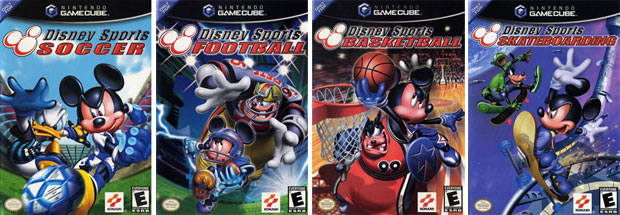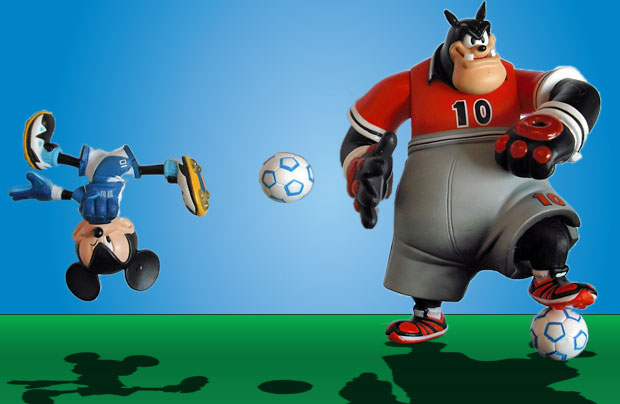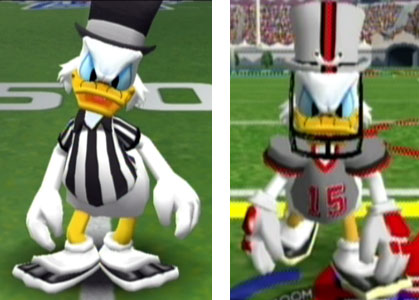What was the ultimate failure of the Disney Sports Network and who was to blame? What lessons, if any, did the industry learn from these games? There were four Gamecube and two Gameboy Advance titles in the DSN series. Was this brand exclusivity because the powers that be at Konami thought that Nintendo was the only platform where the titles would work? Did Konami think that Nintendo had the same family friendly reputation synonymous with Disney? What about the cast of friendly characters, were they inviting or insulting sport fans or casual game fans? Was the game too simplistic in concept and too complex in execution? Was the DSN series a case of greed, where one company licensed a popular name but placed it over as many games as they could with mediocre gameplay? If these things were true then the failure of the DSN series would fall squarely with Konami.

The new Disney President, Bob Iger, thinks the company should put more Disney games on Nintendo platforms and for that matter Marvel titles on more powerful consoles. Was this logic valid given the cold reception to Disney games on systems like the Xbox 360 and PS3 over the past decade? Or did Disney have a bad reputation among the community because their games were lackluster and the company tended to flood the market with title after title for the consoles, handheld and PC? When the titles did move off shelves was it the Disney name that sold them rather than reviews or word of mouth? Titles from Disney Interactive have not developed much of a reputation. When working in conjunction with large publishers like Konami or UbiSoft, very few of their collaborations have ever met with great success. If Disney was bad at making games and even worse at making game decisions then the failure of the DSN series would fall squarely on Disney.


Konami of Japan shaped the canon and history of the Disney icons in sports. Not since the art of / how to videos featuring Goofy made their debut in 1941 have we seen a focused attempt at making the Disney characters relevant in sports culture. The six DSN titles released between 2002-2003 were a footnote in game history but their influence did not disappear. The Japanese take of the designs featured in the DSN series would be emulated again and again in graphic as well as figure art. The titles may have disappeared from the gamer consciousness but not entirely from the collective unconsciousness. The Japanese, more than any western developer had an understanding as to the importance of remaining true to the characters. This held especially true for modern game designers.
![]()
Fans of the Kingdom Hearts series could tell you how true Tetsuya Nomura and Square-Enix were to the source material and more important, how respectful they were of the legacy. That RPG series took many artistic liberties with the character designs of Mickey, Donald, Goofy, Minnie, Pete... well, almost all the icons that were also featured in Disney Sports Network. These stylistic changes were made because the plot demanded it. Square-Enix was able to reinvent the characters while respecting their origins and importance in the universe. They began the series in 2002, the same year that Konami was trying to make the characters into sporting icons. While the latter did not take off, the former developed a massive following, the first Kingdom Hearts game sold almost 9 million copies worldwide. Disney must thank Kingdom Hearts for giving them a good reputation among core gamers. The approach that the Japanese had with the characters settled very well with gamers. They did not simply stick the Disney characters into a typical genre and follow the trends, nor did they try to create a dumbed-down game experience and slap a character on the box. They presented the characters in roles as heroes and villains and allowed them a wide range of emotions and expressions. They were free to be brave and fierce, empathetic and angry through the series. They gave audiences a dramatic plot which was far more complex than those of typical mascot games as well as gameplay dynamics missing from most Western developed Disney titles. These things intrigued gamers, both Disney fans and not. They made the mascots more identifiable than anything Disney had done, animation-wise, in over a decade.

![]()
Provided that Konami and Disney Interactive had learned from their mistakes, and there are many signs that they have, then it would be great to see the Disney Sports Network return. Undoubtedly the series would be much closer to the original vision of bringing not only the Disney characters but the theme parks to life. Both studios have grown and evolved greatly since then and I foresee a time when the characters will become recognizable sports figures as much as cartoon and videogame icons.
I’d like to hear about it in the comments section. As always if you would like to sponsor me please visit my Patreon page and consider donating each month, even as little as $1 would help make better blogs and even podcasts!
No comments:
Post a Comment